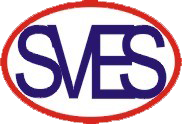
Unlocking the Potential of API 6A Gate Valves: Essential Questions Answered
2023-11-08 10:00Unlocking the Potential of API 6A Gate Valves: Essential Questions Answered
What are the differences between API 6A and API 6D?
API 6A and API 6D are two important standards developed by the American Petroleum Institute (API) related to valves used in the oil and gas industry.

API 6A:
API 6A is a standard specification for valves, piping, and related equipment used in the oil and gas industry.
The API 6A standard primarily covers requirements for valve design, materials, maintenance, testing, quality assurance, and related equipment and accessories.
API 6A standards are typically applied in demanding high-pressure, high-temperature, and corrosive environments, such as in oil drilling and production equipment and wellhead systems.
API 6D:
API 6D is a standard for valves used in pipelines and piping systems in the oil and gas industry.
The API 6D standard mainly covers the design, manufacturing, testing, and acceptance requirements for pipeline valves such as ball valves, gate valves, butterfly valves, and others.
The API 6D standard focuses on the needs of fluid transport within pipelines and requires valves to have reliable sealing performance, low leakage rates, and the ability to operate under various conditions.
Differences:
The main differences lie in the scope of application and design requirements.
API 6A is intended for the harsh high-pressure, high-temperature, and acidic environments of the oil and gas industry, mainly involving oil drilling and production equipment at wellheads, requiring valves to withstand high pressure, high temperature, and corrosive media.
API 6D is aimed at the oil and gas industry's pipelines and piping systems, primarily addressing the design and manufacture of pipeline valves, with a focus on reliable sealing performance, low leakage rates, and adaptability to various operating conditions.
It's important to note that API 6A and API 6D are not mutually exclusive standards, and their use in the oil and gas industry depends on different application areas and requirements.

What are API 6A and API 6D standards? What are their differences?
Differences:
Content Differences:
(1) API 6A is the "Specification for Wellhead and Christmas Tree Equipment."
(2) API 6D is for "Pipeline Valves."
Target Differences: API 6A primarily targets wellhead and Christmas tree equipment. API 6D focuses on pipeline valves.
Standard Differences: The standards required for wellhead and Christmas tree equipment cannot be applied to pipeline valves.
Selection of Pipeline Valves:
Valves for Isolation and Open Media:
Valves with a straight-through flow path have lower flow resistance and are typically chosen for isolating and opening media. Downward-closing valves (e.g., globe valves, plug valves) are less commonly used due to their tortuous flow path and higher flow resistance. In cases where higher flow resistance is permissible, closed-type valves can be selected.
Valves for Flow Control:
(1) Valves that are easy to adjust for flow control are usually chosen. Downward-closing valves (such as globe valves) are suitable for this purpose, as the size of their valve seat is proportional to the stroke of the closing element.
(2) Rotary valves (e.g., plug valves, butterfly valves, ball valves) and flexible-body valves (e.g., pinch valves, diaphragm valves) can also be used for throttling control but are typically applicable within limited valve size ranges. Gate valves, which use a disk-shaped gate to cut across a circular seat opening, can best control flow when close to the closed position, so they are not typically used for flow control.
Valves for Diversion and Bypass:
Valves for diversion and bypass may have three or more passages as needed. Plug valves and ball valves are more suitable for this purpose, so most valves used for diversion and bypass are selected from these types. However, in some cases, other types of valves can be used for diversion and bypass by appropriately connecting two or more valves.
What are the differences between API 6A valve PSL1, PSL2, PSL3, PSL3G, and PSL4?
PSL stands for "Product Specification Level" for steel. Each level is more stringent than the previous one, and API 6A is a standard for wellhead and Christmas tree equipment. The difference between these PSL levels primarily relates to the level of performance and safety requirements.
What are the ISO standards for API 6A and API 6D? What are their differences?
API 6A corresponds to ISO 10423, which is related to wellhead and Christmas tree equipment.
API 6D corresponds to ISO 14316, which pertains to pipeline ball valves. The difference is that API standards are specific to particular products and industries.
What is the API 6A flange standard?
The API 6A flange standard is related to the flanges used in the oil and gas industry for wellhead and Christmas tree equipment.

What are the differences between API 6A valve PR1 and PR2?
There is no structural difference between PR1 and PR2 valves. The main difference lies in the performance requirements, with PR2 having higher performance requirements than PR1.
API 6A certification: What is it, and what are the wellhead and tree standards?
API 6A certification is a recognition provided by the American Petroleum Institute (API) for manufacturers of wellhead and Christmas tree equipment that meet specific design and manufacturing standards. Wellhead and Christmas tree standards refer to the requirements set by API 6A for the design and production of equipment used in oil and gas extraction, specifically at the wellhead. Obtaining API 6A certification demonstrates compliance with these standards and allows manufacturers to use the API monogram on their certified products.
Please note that the text provided is quite technical, and the terms used are specific to the oil and gas industry. If you need further clarification or have more specific questions, please feel free to ask.
